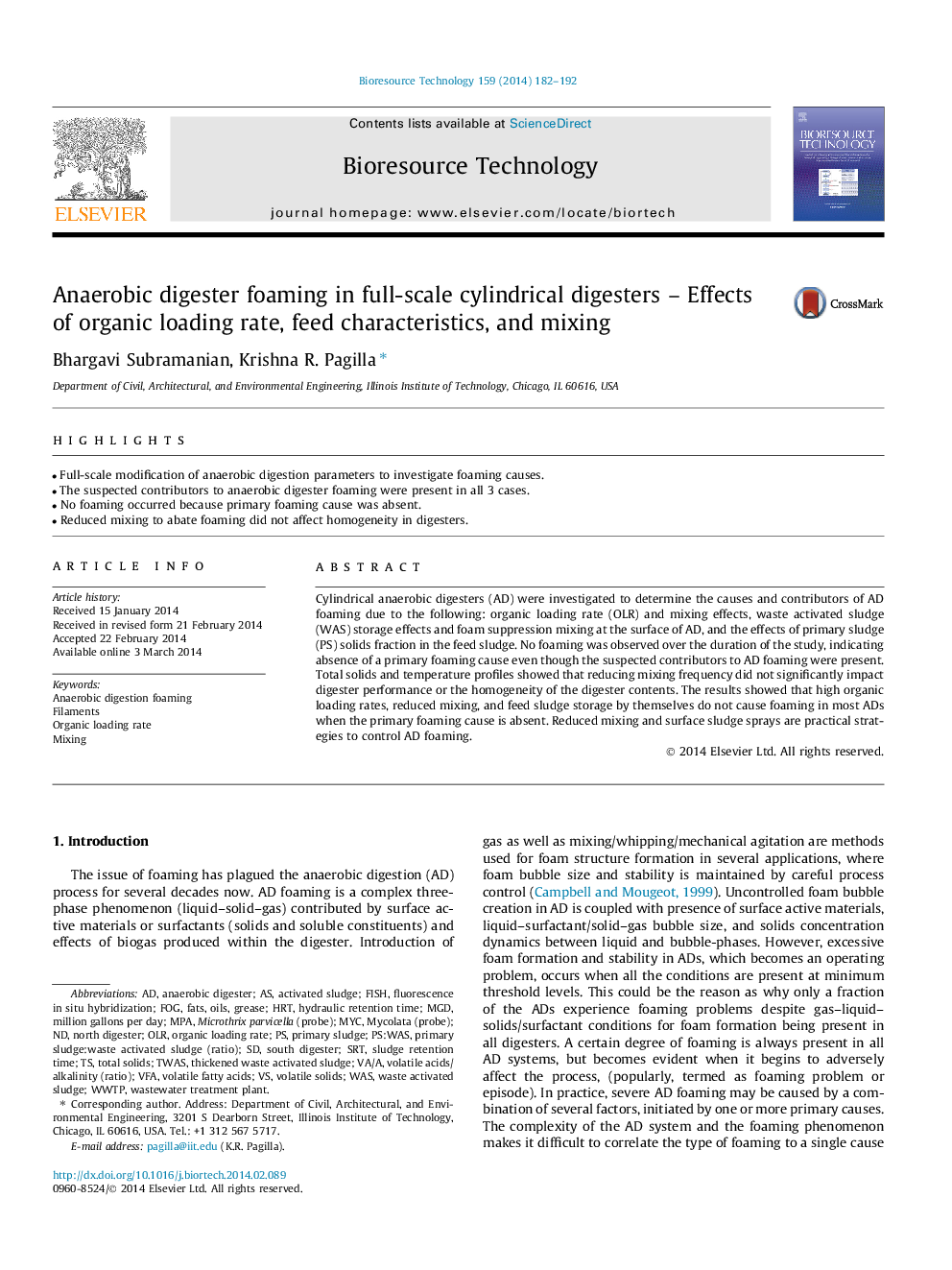| Article ID | Journal | Published Year | Pages | File Type |
|---|---|---|---|---|
| 7078477 | Bioresource Technology | 2014 | 11 Pages |
Abstract
Cylindrical anaerobic digesters (AD) were investigated to determine the causes and contributors of AD foaming due to the following: organic loading rate (OLR) and mixing effects, waste activated sludge (WAS) storage effects and foam suppression mixing at the surface of AD, and the effects of primary sludge (PS) solids fraction in the feed sludge. No foaming was observed over the duration of the study, indicating absence of a primary foaming cause even though the suspected contributors to AD foaming were present. Total solids and temperature profiles showed that reducing mixing frequency did not significantly impact digester performance or the homogeneity of the digester contents. The results showed that high organic loading rates, reduced mixing, and feed sludge storage by themselves do not cause foaming in most ADs when the primary foaming cause is absent. Reduced mixing and surface sludge sprays are practical strategies to control AD foaming.
Keywords
VFAmillion gallons per dayThickened waste activated sludgeTWASMGDsRTMPAMYCOLRWWTPHRTVolatile fatty acidsWASWastewater treatment plantTotal solidsvolatile solidsFilamentsSludge retention timehydraulic retention timefluorescence in situ hybridizationPrimary sludgeActivated sludgeWaste activated sludgeFishMixingFogOrganic loading rateAnaerobic digester
Related Topics
Physical Sciences and Engineering
Chemical Engineering
Process Chemistry and Technology
Authors
Bhargavi Subramanian, Krishna R. Pagilla,
